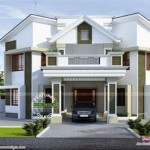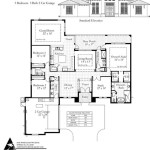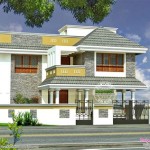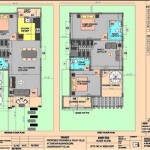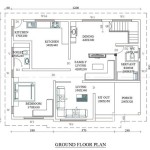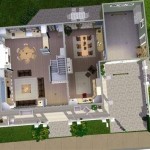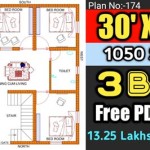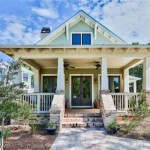Hybrid Timber Frame House Plans: Blending Tradition with Modernity
Hybrid timber frame house plans offer a compelling blend of traditional timber framing with modern building methods. This approach leverages the aesthetic appeal and structural integrity of timber framing while incorporating cost-effective and energy-efficient construction techniques. The result is a home that exudes warmth and character while meeting the demands of contemporary living.
Key Advantages of Hybrid Timber Frame Homes
Hybrid timber frame construction offers several benefits that make it an attractive choice for homeowners:
*Design Flexibility: The hybrid approach allows for greater design freedom, incorporating various architectural styles and layouts. Timber frames can be integrated with conventional framing, enabling complex rooflines, expansive windows, and open floor plans.
*Cost-Effectiveness: By strategically using timber framing for key structural and aesthetic elements, homeowners can achieve the desired look and feel without the expense of a full timber frame home. Conventional framing is utilized for less visible areas, optimizing cost efficiency.
*Energy Efficiency: Hybrid timber frame homes can incorporate advanced insulation and energy-efficient building materials, resulting in lower energy bills and a smaller environmental footprint. The thermal mass of the timber itself contributes to temperature regulation.
Understanding Hybrid Timber Frame Construction
Hybrid timber framing combines the best of both worlds: the beauty of exposed timber framing with the practicality and efficiency of conventional stick-built construction. Instead of using timber framing for the entire structure, it is strategically employed for specific areas, such as:
*Great Rooms and Entryways: Timber frames create a dramatic focal point in these prominent spaces, showcasing the natural beauty of the wood.
*Gables and Rooflines: Exposed timber trusses add architectural interest and enhance the exterior appearance of the home.
*Interior Accents: Timber beams and posts can be incorporated into interior walls and ceilings to create a warm and inviting atmosphere.
The remainder of the structure is typically built using conventional framing methods, including 2x4 or 2x6 studs, sheathing, and insulation. This approach allows for faster construction times and greater flexibility in design.
Design Considerations for Hybrid Timber Frame Plans
When planning a hybrid timber frame home, careful consideration should be given to several factors:
*Timber Selection: Choosing the right type of wood is crucial for both aesthetics and structural integrity. Popular choices include Douglas fir, Eastern white pine, and reclaimed timbers.
*Connection Details: The joinery used to connect the timber frame elements is a critical aspect of the design. Traditional mortise and tenon joints can be used for a classic look, while modern metal connectors offer strength and efficiency.
*Integration with Conventional Framing: The transition between the timber frame and conventional framing should be carefully planned to ensure a seamless and structurally sound connection.
Exploring Hybrid Timber Frame House Plans Online
Numerous online resources offer a wide selection of hybrid timber frame house plans. These plans provide a starting point for customizing a design that meets specific needs and preferences. When exploring online plans, consider the following:
*Reputable Designers and Architects: Look for plans from established designers and architects with experience in hybrid timber frame construction.
*Customization Options: Ensure the plan allows for modifications to suit individual needs and site conditions.
*Detailed Specifications: The plan should include comprehensive details regarding timber sizes, connection details, and conventional framing specifications.
Working with a Builder for Hybrid Timber Frame Homes
Engaging a qualified builder experienced in hybrid timber framing is essential for a successful project. The builder will play a crucial role in:
*Value Engineering: The builder can help identify cost-effective solutions and materials without compromising the design or structural integrity.
*Construction Management: Overseeing the construction process ensures the project stays on schedule and within budget.
*Quality Control: The builder is responsible for ensuring the quality of the workmanship and materials used in the project.
The Growing Popularity of Hybrid Timber Frame Homes
The demand for hybrid timber frame homes is increasing as homeowners seek unique and character-filled homes that blend traditional craftsmanship with modern amenities. The flexibility, cost-effectiveness, and energy efficiency of this construction method make it an appealing choice for a wide range of homeowners and architectural styles.
Long-Term Value and Maintenance
Hybrid timber frame homes, when properly constructed and maintained, offer excellent long-term value. With regular maintenance, the timber frame components can last for generations, adding character and charm to the home.
*Wood Protection: Applying sealants and stains protects the timber from weathering and insect damage.
*Regular Inspections: Periodic inspections can identify potential issues early on, preventing costly repairs.
*Moisture Control: Proper ventilation and moisture control are essential for preventing rot and decay.

Hybrid Timber Frame Homes By Davis Company

Prefab Home Packages From Tamlin Timberframe Homes

Hybrid Homes Natural Element Timber Log

Hybrid Timber Frame Homes By Davis Company

Timber Frame Designs Floor Plans Timberbuilt

Introducing Hybrid Homes With Timber Accents Timberhaven Log

Southland Hybrid Timber Frame Log Homes

Timber Frame Hybrid Home Material And Package Specifications Timberhaven Log Homes

Hybrid Timber Framing Sip Homes Riverbend Frames

One Level Timber Frame Floor Plans Davis Company

